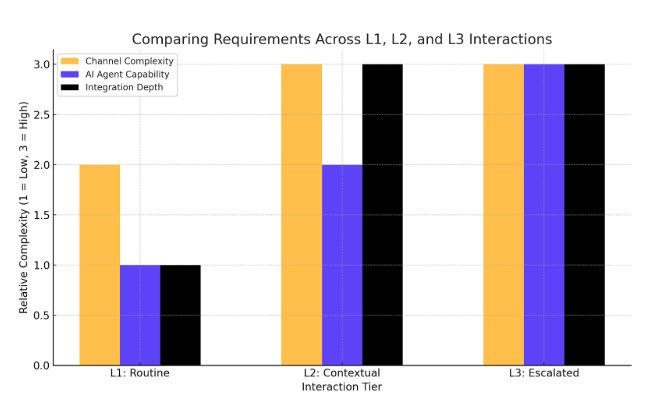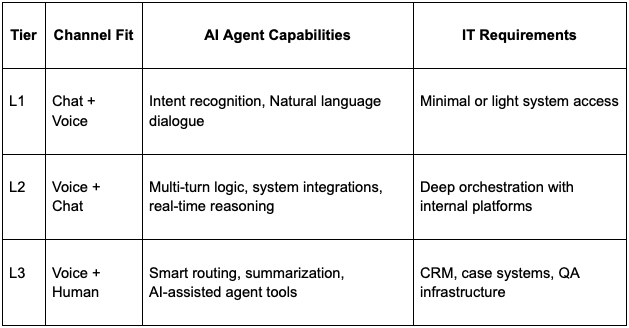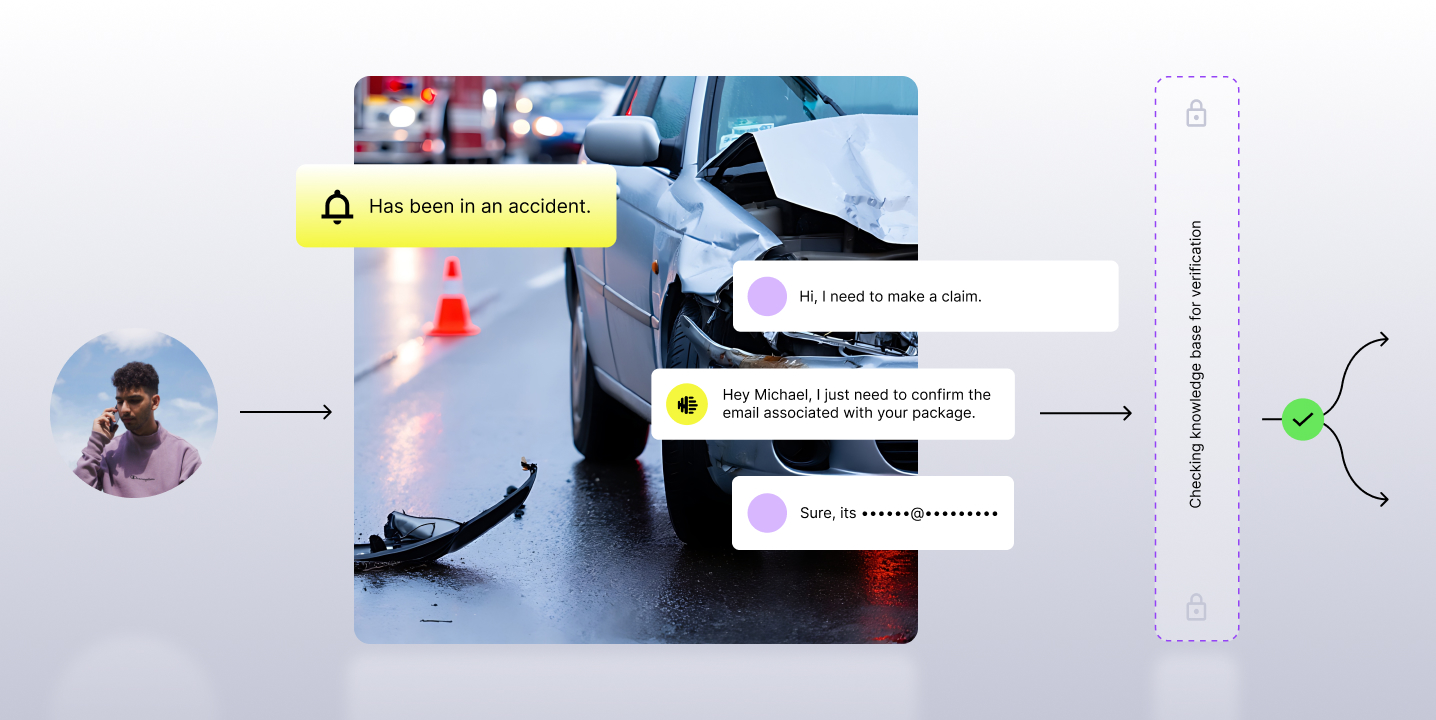What Are L1, L2, and L3 Interactions?
These tiers reflect more than just the topic of an interaction, they reflect how much context, judgment, and integration are required to reach a resolution.
Level 1 (L1): Routine and Rule-Based
L1 interactions are straightforward, transactional, and well-documented. They require little to no context from previous conversations and no interpretation of policy nuance.
What defines L1:
- One-step tasks with low variability: things such as hours of operation, address of storefronts, or specific FAQs
- Doesn’t require backend system access (or accesses one system in a simple way)
- Resolution can be fully scripted or template-driven
Why AI works well: These interactions can be fully handled by AI agents using simple RAG. There is value in automating these types of interactions and reducing the load on human support.
Level 2 (L2): Contextual and Connected
L2 interactions require a deeper understanding of the customer’s specific situation and the ability to apply logic or rules dynamically. These conversations often involve multi-turn dialogues and decision-making based on backend data.
What defines L2:
- Requires access to and coordination between backend systems (e.g., CRM, claims, scheduling)
- Involves business rules, policies, or calculations based on customer data
- May require AI to explain an outcome or reason through options
- Often includes some ambiguity or decision paths that branch
Why AI needs more than scripts: These are high-value opportunities for AI Agents to execute workflows, retrieve information, and respond with context. But doing so requires integration and reasoning, not just recognition.
Level 3 (L3): Escalated, Emotional, or Expert-Only
L3 interactions are complex, often emotionally charged, and require human judgment, negotiation, or discretion. They can’t be reliably automated (or shouldn’t be), but they can be enhanced with AI.
What defines L3:
- High stakes or emotional sensitivity
- Involves gray areas of policy, edge cases, or exceptions
- May include complaints, legal issues, or escalations
- Requires human empathy or negotiation
Why AI plays a supporting role: AI, whether via text, analytics, or an AI Voice Calling agent, should help by gathering context, summarizing the issue, and guiding the human agent for faster and more empathetic resolution.

Why Companies Must Architect Around Interaction Tiers
Understanding these tiers isn’t just a framework for routing interactions; it's also a framework for understanding the nature of interactions. It’s a blueprint for deploying AI responsibly and effectively.
- Avoid automation theater: Automating L1 interactions looks good on paper, but if L2 issues are driving cost and frustration, your most significant opportunities are being missed.
- Surface the right pain points: Are agents spending most of their time explaining policies, correcting backend errors, or resolving repeated process gaps? That’s where AI should go next.
- Design smarter handoffs: If AI cannot resolve an issue, it should escalate it intelligently, providing full context, recommended actions, and policy references for the human agent.
Solving for Each Interaction Tier

Why “Easy” Doesn't Mean Impactful
Resetting a password feels like a quick win. It’s measurable and clean. However, it rarely addresses what is actually causing support bottlenecks.
If your organization is suffering from:
- Long handle times
- Policy confusion
- Frequent escalations
- Rework caused by miscommunication
Then focusing only on L1 automation won’t move the metrics that matter.
You don’t solve operational pain by avoiding complexity. You solve it by leaning into it with better tools.
Integrations: The Hidden Key to Solving L2 and L3
Most AI projects fail not because the model wasn’t smart enough, but because the AI had no way to act. Integrations and information are key for any successful AI deployment.
Good AI isn’t just natural language understanding. It’s systems understanding.
To resolve L2 and L3 interactions, AI Agents need:
- Real-time access to core systems (CRM, billing, policy engines)
- The ability to update records and trigger workflows
- A way to fetch personalized responses from knowledge or policy databases
No integration = no insight. And without insight, your AI Agent is just another roadblock for the customer on the path to resolution.
This is where most automation efforts stall – at the intersection of intelligence and action.
Final Thought
L1, L2, and L3 are more than support categories—they’re the foundation of a successful AI strategy.
- L1 automation drives efficiency.
- L2 automation delivers transformation.
- L3 augmentation protects your brand and your customer relationships.
If your AI strategy treats every interaction the same, it’s time to rearchitect.
Because in today’s world of customer support, how you respond matters just as much as what you say.
Let’s discuss your AI strategy for customer support.


















